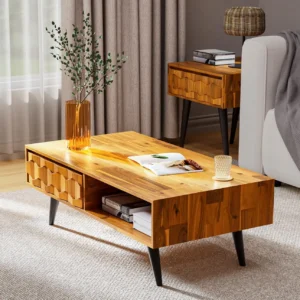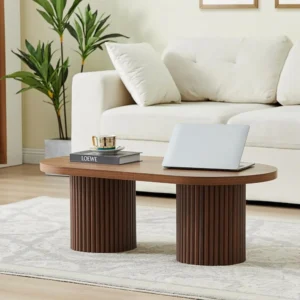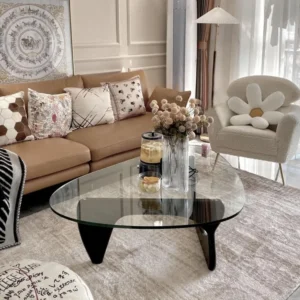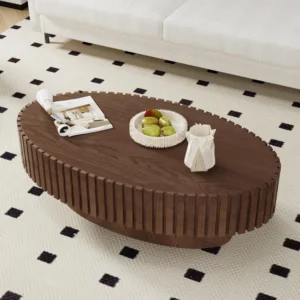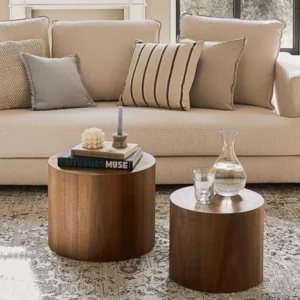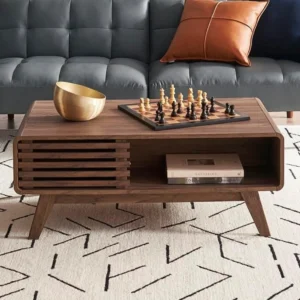Introduction: The Often Confused Design Terms
When browsing furniture stores or online marketplaces, you’ve likely encountered both “mid-century” and “mid-century modern” furniture descriptions. These terms frequently appear interchangeably, creating confusion for enthusiasts, collectors, and buyers alike. Yet understanding the distinction between them is crucial for making informed decisions about the pieces you bring into your home.
This confusion isn’t just semantic—it affects how we identify, value, and appreciate furniture from this influential design era. The difference matters whether you’re looking to invest in authentic pieces, create a cohesive interior design, or simply appreciate the historical context of your furniture choices.
At Hearth Forms, our expertise in curated mid-century modern table collections stems from recognizing these important distinctions. Our understanding of Danish-inspired coffee table designs informs how we select each piece for our collection, ensuring authenticity and quality.
Throughout this article, we’ll clarify these often misunderstood terms and provide you with the knowledge to distinguish between general mid-century furniture and the specific mid-century modern design movement.
Understanding the Mid-Century Time Period
The mid-century period generally spans from approximately 1933 to the mid-1970s, encompassing the years before, during, and after World War II. This era witnessed profound social, economic, and technological transformations that directly influenced furniture design and production.
Several key historical factors shaped design during this time:
- The post-World War II economic boom created a surge in consumer spending and home construction
- Technological advances introduced new materials and manufacturing processes
- Mass production techniques became more sophisticated
- The rapid expansion of American suburbs created demand for new home furnishings
- Cultural optimism fostered innovative thinking and design experimentation
These developments allowed furniture makers to explore novel approaches to traditional forms. New manufacturing techniques made it possible to work with materials in previously impossible ways, while changing lifestyles demanded furniture that served evolving needs.
The techniques for identifying Danish-inspired coffee tables developed during this period still help collectors recognize authentic pieces today. This broader historical context is essential to understanding why mid-century encompasses multiple design aesthetics rather than a single unified style.
Mid-Century Furniture Defined: A Broad Category
Mid-century furniture refers to all furniture created during the mid-century time period, regardless of style or design philosophy. This term is primarily a chronological classification rather than a specific aesthetic category.
During this era, furniture styles varied widely, including:
- Traditional designs with historical references
- Colonial revival pieces that looked to America’s past
- French Provincial styles popular in suburban homes
- Contemporary furniture with clean, updated lines
- Modern pieces that embraced new materials and forms
- Scandinavian-influenced designs with warm minimalism
The diversity of materials used in mid-century furniture was equally broad—from traditional hardwoods and upholstery to innovative applications of metal, glass, plastic, and plywood. Furniture manufacturers created pieces to suit different consumer preferences, price points, and interior styles.
Understanding the variety within mid-century modern table design helps distinguish specific modernist pieces from the broader range of furniture produced during this period. This distinction matters because not everything created during the mid-century era adheres to modernist design principles.
Mid-Century Modern: A Specific Design Philosophy
Mid-century modern represents a specific design movement that flourished within the broader mid-century period. Rather than simply denoting when a piece was made, this term describes a distinct design philosophy characterized by:
- Form following function, where practical use determines design
- Clean, uncluttered lines with minimal ornamentation
- The honest expression of materials
- Integration of organic and geometric forms
- Democratization of good design through mass production
- Emphasis on accessibility and livability
This design approach drew heavily from earlier modernist movements, particularly:
- The Bauhaus school’s fusion of art and industrial design
- The International Style’s commitment to functionalism
- Scandinavian design’s warmth and connection to nature
Mid-century modern furniture prioritized innovation in both aesthetics and construction. Designers experimented with new manufacturing techniques to create sculptural, organic forms that remained highly functional. The core elements of Danish modern coffee table elements exemplify this balance between beauty and utility.
Unlike traditional furniture that often emphasized ornate details and historical references, mid-century modern pieces embraced simplicity, celebrating clean lines and the inherent beauty of materials. This forward-thinking approach represented a significant departure from previous furniture traditions.
Key Differences: Mid-Century vs. Mid-Century Modern Furniture
To clearly understand the distinction between these terms, consider these key differences:
| Aspect | Mid-Century Furniture | Mid-Century Modern Furniture |
|---|---|---|
| Definition | Furniture produced during the mid-century time period | A specific design movement with modernist principles |
| Scope | Broad category including multiple styles | Narrow category with specific design characteristics |
| Time Period | Approximately 1933-1975 | Most prominent from late 1940s through 1960s |
| Design Philosophy | Varies widely from traditional to contemporary | Form follows function, minimalism, innovation |
| Materials | Traditional and new materials | Emphasis on honest expression of materials |
| Forms | Diverse range including traditional silhouettes | Clean lines, organic curves, minimal ornamentation |
| Colors | Full spectrum from muted traditionals to bold moderns | Often natural wood tones with strategic color accents |
The most important distinction is that mid-century is a time-based classification, while mid-century modern refers to a specific design approach. Think of it this way: all mid-century modern pieces are mid-century furniture, but not all mid-century furniture is mid-century modern.
Many interior designers find that styles go well with mid-century modern precisely because of its clean lines and timeless quality. This versatility is one reason the style has remained popular for decades.

Characteristic Materials of Mid-Century Modern Furniture
The materials used in mid-century modern furniture were carefully chosen to align with the movement’s core philosophy of honest, functional design. These distinctive materials include:
Natural Hardwoods: Teak, walnut, and rosewood were prized for their warm tones, beautiful grain patterns, and durability. These woods were often left with clear finishes to highlight their natural beauty.
Molded Materials: Innovations in manufacturing enabled designers to create curved, organic shapes from plywood, fiberglass, and plastic that would have been impossible with traditional techniques.
Metal Elements: Chrome-plated steel, brushed aluminum, and brass were used for structural components and accents, adding visual lightness and strength to designs.
Glass: Clear, smoked, or textured glass was frequently incorporated into tabletops, allowing visual space and light to flow through a piece.
New Synthetics: Materials like vinyl, acrylic, and fiberglass represented the era’s enthusiasm for technological innovation.
These material choices weren’t arbitrary—they reflected the design movement’s emphasis on truth in materials, allowing each substance to express its natural properties rather than imitating something else. Our collection of mid-century modern solid wood coffee tables showcases how these authentic materials contribute to the enduring appeal of these pieces.
Distinctive Forms and Silhouettes in Mid-Century Modern Design
Mid-century modern furniture is immediately recognizable through characteristic shapes and forms that define the style:
Organic Curves: Smooth, flowing lines inspired by natural forms created furniture that was both sculptural and functional.
Geometric Patterns: Clean, angular elements balanced organic shapes, often appearing in table bases, chair frames, and decorative details.
Tapered Elements: Legs and supports that narrow toward the bottom create a sense of lightness and visual interest.
Splayed Legs: Outward-angling legs, often set at precise angles, provide stable support while maintaining a dynamic appearance.
Floating Components: Tables, cabinets, and seating that appear to hover above the floor, created through clever structural design.
Minimal Framing: Thin profiles and reduced visual weight make pieces appear less bulky and more refined.
These distinctive silhouettes represented a significant departure from the heavier, more ornate furniture styles that preceded them. Our selection of mid-century modern round coffee tables demonstrates how these characteristic forms create both visual interest and practical functionality.
Iconic Mid-Century Modern Designers and Their Influence
The mid-century modern movement was shaped by visionary designers whose work continues to influence furniture design today:
Charles and Ray Eames pioneered innovative techniques for molding plywood, creating iconic chairs and tables that balanced sculptural forms with practical function. Their design studio developed manufacturing methods that made sophisticated design accessible to average consumers.
George Nelson, as Herman Miller’s design director, created the iconic platform bench, marshmallow sofa, and bubble lamps that defined American modernism. His clean, modular approach continues to inspire contemporary designers.
Eero Saarinen revolutionized furniture design with his Tulip and Womb chairs, using organic forms and innovative materials to create comfortable, visually striking pieces. His pedestal tables eliminated what he called the “slum of legs” under traditional tables.
Hans Wegner, a Danish furniture maker, created over 500 chair designs including the renowned “Round” or “The Chair” that exemplified Scandinavian modern values. His work shows the overlap between Scandinavian Danish coffee table design principles.
These designers and others collaborated with manufacturers like Herman Miller and Knoll to bring high-quality design to the mass market. Their pioneering work established principles that continue to define what we recognize as mid-century modern style.

How to Identify Authentic Mid-Century Modern Pieces
Distinguishing authentic mid-century modern furniture from later reproductions requires attention to specific details:
Examine Construction Techniques: Authentic pieces often feature meticulous joinery, including dovetail and finger joints in drawers, and mortise-and-tenon connections in frames.
Check Materials: Genuine pieces typically use solid woods or quality veneers over plywood rather than particleboard or MDF. Look for quality metals like brass and steel rather than plastic components.
Look for Patina: Original pieces will show appropriate aging consistent with their materials—teak and rosewood develop a rich patina, while metals may show slight oxidation.
Inspect Proportions: Authentic designs have balanced, harmonious proportions that result from careful design rather than mass production shortcuts.
Research Maker’s Marks: Many quality pieces bear labels, stamps, or other identifiers from original manufacturers or designers.
At Hearth Forms, we carefully evaluate each piece in our mid-century modern walnut coffee tables collection using these criteria to ensure authenticity and quality. Understanding these markers helps collectors distinguish valuable pieces from mass-produced replicas.
Caring for Mid-Century Modern Furniture
Proper maintenance ensures your mid-century modern pieces remain beautiful for generations:
For wood surfaces, dust regularly with a soft, dry cloth following the grain direction. Clean with a slightly damp cloth and mild soap when needed, then dry immediately. Apply high-quality furniture wax sparingly once or twice a year to maintain the finish.
Metal components should be dusted regularly and wiped with appropriate cleaners—chrome polish for chrome surfaces, brass cleaner for brass elements. Avoid abrasive cleaners that might damage protective finishes.
Glass surfaces require regular cleaning with appropriate glass cleaner and a lint-free cloth. Avoid placing hot items directly on glass to prevent thermal shock and potential cracking.
When moving mid-century pieces, lift rather than drag to prevent stress on joints and legs. This is particularly important for pieces with delicate or splayed legs that can easily break under lateral pressure.
Our mid-century modern teak coffee tables benefit from special care that preserves the natural oils in this distinctive wood. Proper maintenance not only maintains appearance but also preserves the value of these investment pieces.
Mid-Century Modern Solid Wood Coffee Tables, Mid-Century Modern Teak Coffee Tables
$879.95 Select options This product has multiple variants. The options may be chosen on the product pageMid-Century Modern Danish Coffee Tables, Mid-Century Modern Oval Coffee Tables, Mid-Century Modern Solid Wood Coffee Tables
$390.05 Select options This product has multiple variants. The options may be chosen on the product pageMid-Century Modern Glass Top Coffee Tables, Mid-Century Modern Vintage Coffee Tables, Mid-Century Modern Vintage Side & End Tables
$725.36 Select options This product has multiple variants. The options may be chosen on the product pageMid-Century Modern Oval Coffee Tables, Mid-Century Modern Solid Wood Coffee Tables
$679.56 Select options This product has multiple variants. The options may be chosen on the product pageMid-Century Modern Nesting Table Sets, Mid-Century Modern Round Coffee Tables
$462.57 Select options This product has multiple variants. The options may be chosen on the product pageMid-Century Modern Solid Wood Coffee Tables, Mid-Century Modern Walnut Coffee Tables
$501.53 Select options This product has multiple variants. The options may be chosen on the product page
The Enduring Appeal of Mid-Century Modern Design
Mid-century modern furniture has transcended its era to become a timeless style that continues to resonate with contemporary audiences. Several factors contribute to this enduring appeal:
The clean, uncluttered aesthetic aligns perfectly with today’s emphasis on simplified living and thoughtful consumption. These pieces feel as relevant now as they did when first designed.
The focus on quality materials and construction means that original pieces have survived decades of use while maintaining their beauty and functionality—a testament to their enduring quality.
The versatile nature of mid-century modern design allows these pieces to complement various interior styles, from strictly contemporary to eclectic mixes. Their restraint and clean lines provide a sophisticated foundation for diverse decorating approaches.
As sustainability concerns grow, the longevity of well-designed furniture becomes increasingly important. Investing in quality pieces, whether vintage originals or authentic reproductions, represents a sustainable alternative to disposable furniture.
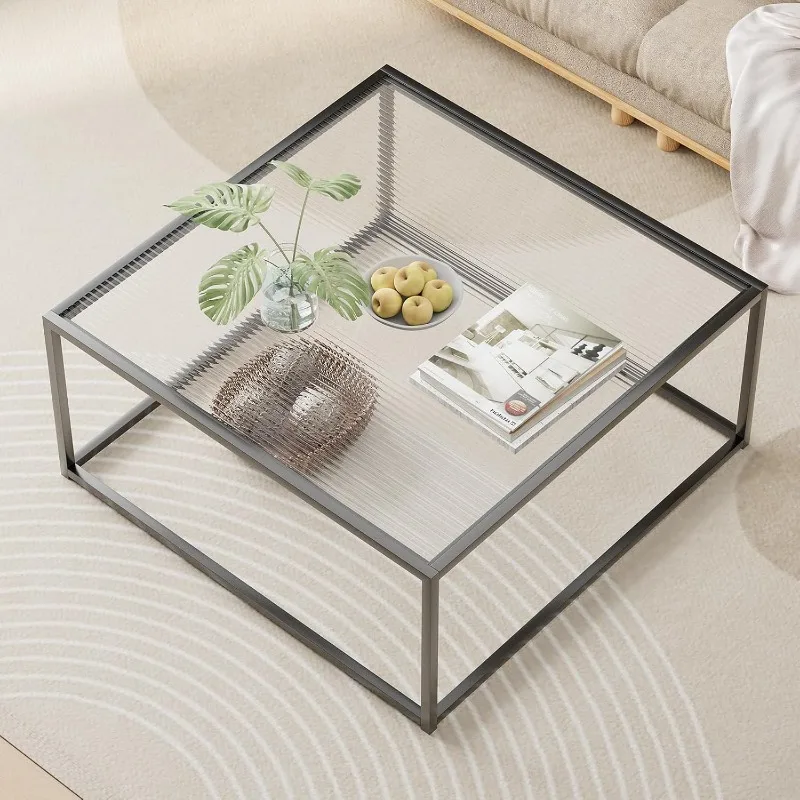
Our collection of mid-century modern vintage coffee tables showcases pieces that have maintained their relevance and beauty for decades, demonstrating why this design approach continues to captivate new generations of design enthusiasts.
FAQs About Mid-Century and Mid-Century Modern Furniture
Is all furniture from the mid-century period considered mid-century modern?
No. Mid-century furniture includes all pieces made during this time period (roughly 1933-1975), while mid-century modern refers specifically to pieces that follow modernist design principles focused on clean lines, functionality, and innovative materials.
How does Scandinavian design relate to mid-century modern furniture?
Scandinavian design significantly influenced mid-century modern furniture with its emphasis on clean lines, functional forms, and quality craftsmanship. The Danish coffee table design guide shows how these traditions overlap, though Scandinavian design typically features lighter woods and a warmer aesthetic than some American mid-century modern pieces.
What makes certain mid-century modern pieces more valuable than others?
Value depends on several factors: designer reputation, manufacturer quality, rarity, condition, and provenance. Original pieces by renowned designers in good condition command premium prices, while mass-produced items typically have more modest values.
Can mid-century modern furniture work in contemporary interiors?
Absolutely. The clean lines, functional design, and timeless aesthetic of mid-century modern pieces complement contemporary spaces beautifully. Their understated forms provide visual interest without overwhelming modern interiors.
How can I tell if a “mid-century inspired” piece captures authentic design principles?
Look for hallmarks of genuine mid-century modern design: clean lines, functional forms, quality materials, careful proportions, and minimal ornamentation. Authentic-inspired pieces respect these principles rather than merely copying surface-level aesthetics.


